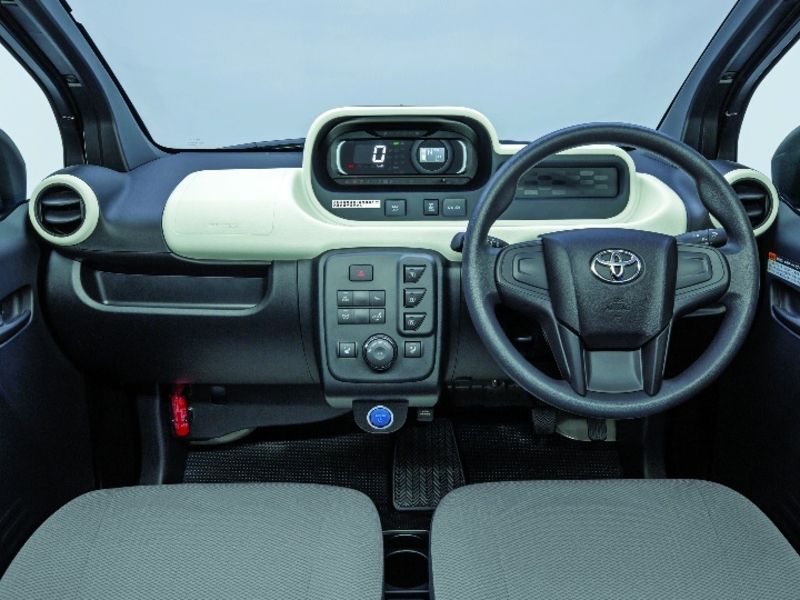
TOKYO — Toyota is putting a small electric vehicle on the roads of Japan with an innovative design for handling the country’s narrow, winding streets and urban commuting needs.
The C+Pod, launched Dec. 25, measures just 8 feet, 2 inches long and 4 feet, 3 inches wide, delivering an ultratight turning radius of 12 feet, 10 inches.
The diminutive dimensions enable ideal navigation of the sharp corners and narrow streets that vein the home country’s road network. The C+Pod is even narrower and shorter than the popular super-compact minicars that make up 37 percent of the local market.
The C+Pod — pronounced C Pod, without the plus — also represents a comeback for Toyota. It is the automaker’s first electric car for Japan since it discontinued the short-lived eQ, a battery-driven version of the Scion iQ three-seat minicar.
The new entry is part of Toyota’s gambit to get back into the EV game with a lineup of 10 EVs worldwide in the early 2020s. Today, Toyota’s worldwide electric offerings are limited to the C+Pod in Japan, the Toyota C-HR and Izoa crossovers in China and the Lexus UX compact crossover in China, Japan, Europe, Thailand and Indonesia.
Among the engineering tricks on the C+Pod is the use of plastic body panels to reduce weight and extend the car’s range. The pint-size pod comes in at just 1,521 pounds.
It also supports standard charging direct from household outlets, taking five hours to fully recharge at 200 volts, or 16 hours at 100 volts. That allows overnight charging for daily business use or one charge a week for more limited use.
Toyota said the car’s construction better absorbs energy in front, side and rear impacts and also better protects pedestrians. Car accidents involving pedestrians are a significant concern in densely populated Japan. Its pre-collision safety system can detect other vehicles, pedestrians and bicycles.
The interior gets a stripped-down, minimalistic Fisher-Price feel, with big knobs and buttons.
But the C+Pod is limited in its abilities. It offers only up to 93 miles of range on a full charge of its lithium ion battery, as assessed under the Worldwide Harmonized Light Vehicles Test Procedure.
Toyota maintains that is enough for daily use. Toyota will first offer the C+Pod to corporate users, local governments and other fleet customers. It will be extended to individuals by 2022.
The car is an opening play in Toyota’s effort to transform itself from an old-school automaker into a purveyor of next-generation personal mobility. Also in its plans: The i-Road compact three-wheeled electric scooter and a lineup of what are known as walking-area battery-electric vehicles. Those are low-speed support vehicles and scooters that move people through pedestrian zones.
The C+Pod is made in limited volume on a dedicated line at the company’s Motomachi assembly plant in Toyota City. The factory has morphed a bit into a workshop for specialty cars, currently building such nameplates as the Crown sedan, Mirai fuel cell vehicle and GR Yaris hot hatch.
The C+Pod starts at ¥1.65 million ($15,840) in Japan, including consumption tax.